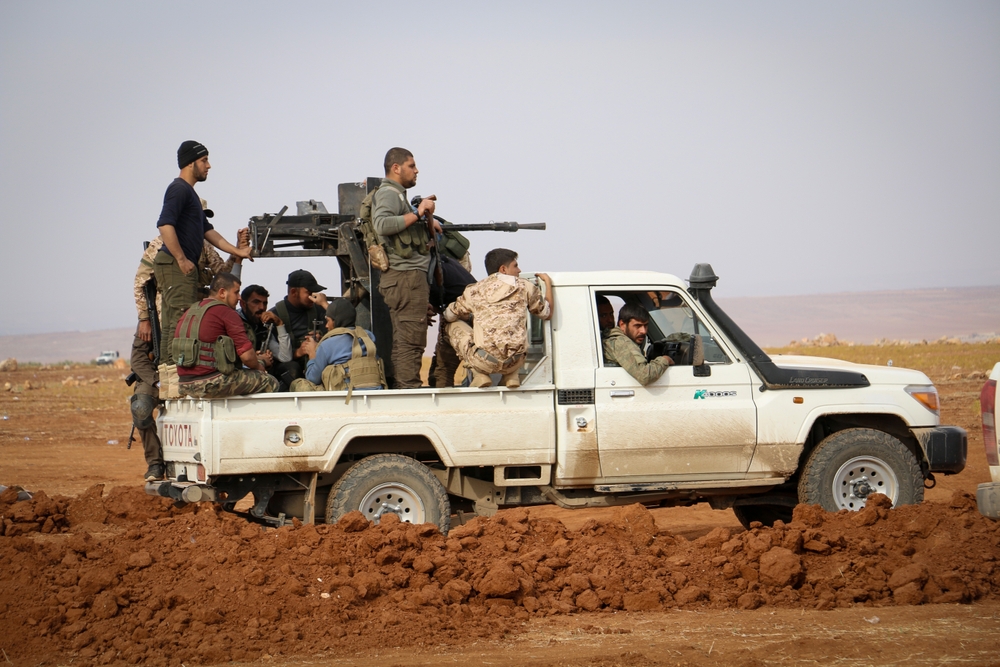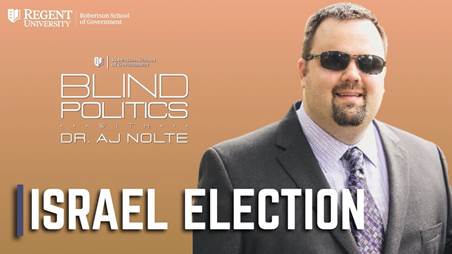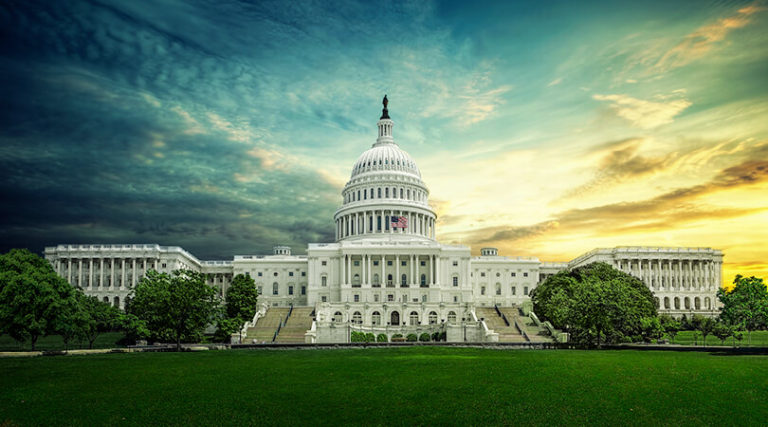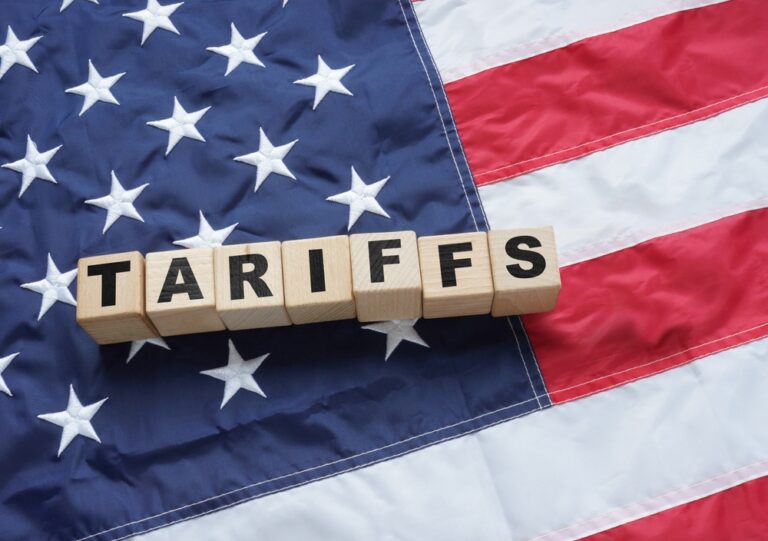Slaughter in Syria: Geopolitics, Religion, and the Future of Christians in the Middle East
Editor's Note: The views and opinions expressed in this article are those of the author and do not necessarily reflect the official policy or position of Regent University, its faculty, administration, or affiliates.
The world was shocked by the recent massacres of religious minorities in Syria. After the collapse of the Assad regime, many observers were hopeful for an end to the country’s bloody civil war, and the emergence of a newly stable, secure, and successful Syria. Those hopes have been dashed by the killing of thousands of Alawites and hundreds of Christians by militias linked to the newly-installed President and his HTS rebel group.
Explanations for the recent massacre vary, from claims of retaliation against attacks by Assad loyalists to the argument that fasting during Ramadan motivated Sunni Muslims to sectarian killing. Certainly, both Christian and Muslim holidays are often peak times for anti-Christian violence in the Muslim world. That said, quite a bit more is at play here than an acute case of the holy “hangries.” As is often the case, local conditions, geopolitics, and religious extremism all play a role.
We should make no mistake; the Assad family’s Baathist dictatorship was soaked in brutality and human-rights abuses. This included mass torture, use of chemical weapons, indiscriminate killing of civilians, and cooperation with the violent extremist and theocratic Iranian regime. But from the perspective of Syria’s ethno-religious minorities, it was likely better than the alternative. The Assads were secular, and relied on the support of elites from their own Alawite community, as well as Christians and other religious minorities. Like the Druze, the Alawites are technically Muslims, but are considered heretical by all orthodox Sunni Muslims.
On the other hand, the Syrian opposition are, from the perspective of freedom, democracy, and religious pluralism, not much better than the regime. To be sure, the Kurdish-linked Syrian Democratic Forces have established a relatively stable, non-sectarian autonomous zone in northeast Syria. But these forces have needed to protect themselves against both the Assad regime and the rest of the opposition. From HTS to the explicitly Turkish-backed Islamists to ISIS, most of the opposition are some variety of Sunni Islamist. Certainly, this has not lead to internal harmony and unity. Abu Mohammed Al-Golani, the rebranded, suit-wearing, interim President of Syria, headed an Al Qaeda-linked militia called the Al-Nusra front. Though committed Islamists, Al-Nusra also had significant conflict with ISIS.
But neither ISIS nor HTS, is the main player in the Sunni opposition. The chief backer of these disparate forces—sometimes including ISIS—is Turkish President Recep Tayyip Erdogan. Ankara’s reasons for involvement in Syria are complex. For one, Turkey has claimed that the YPG, the main Kurdish militia, has ties to the Marxist Kurdish terrorist group the PKK. This may be true, but is beside the point. Ankara’s main fear is that another autonomous Kurdish region on its borders will give Turkey’s own substantial Kurdish population ideas. After a brief opening, in which the Kurds were brought into the political process several years ago, Erdogan abruptly reversed course, stoking anti-Kurdish sentiment to strengthen his position with the nationalists. Erdogan also emerged as a lead backer of Islamist forces in the various Arab Spring movements throughout the 2010s.
Finally, Erdogan has a clear ideological vision of Turkey’s place in the region. Careful study of Turkish media shows an increased focus on the late Ottoman period and, in particular, the bloody, autocratic Abdulhamid II, the empire’s last effective Sultan. Known as the “Red Sultan” in the West, due to his bloody pogroms against Christians, Abdulhamid’s style of rule can best be described as authoritarian, Islamic modernism. Erdogan aspires to replicate this formula, drawing on the prestige of the defunct Ottoman Caliphate to justify a new Turkish hegemony in the Sunni world. To do so, he has engaged in careful triangulation in the ideological cold war between Shia, revisionist Iran, and Sunni, status-quo, Saudi Arabia.
Finally, there are two more peripheral players with a geopolitical stake in Syria: Russia and Israel. Russia’s interest is almost entirely pragmatic. The Tartus naval base on Syria’s coast, guaranteed by the Assad regime and Iran, was Russia’s primary warm-water port. Access to warm-water ports has been a major Russian strategic interest since the time of Peter the Great. Finally, Israel was deeply ambivalent about the entire Syrian conflict. On one hand, the Assad regime facilitated weapons transfers from Iran to Hezbollah, and Hezbollah actively fought on its behalf. On the other, Israel has no interest in the rise of a Sunni Islamist regime, Turkish-controlled or not, on its border. The Druze community in Syria, whose (sometimes literal) cousins thrive in Israel, could be natural allies and proxies for Israel, as the Jewish state seeks strategic depth against future Islamist threats.
Thus, the back-drop of the recent massacres shows a highly volatile complexity. On one hand, there are credible reports that Iran has been working with former regime elements to create an insurgency. On the other, there are equally credible reports that the new government believes peace with the Alawites and other pro-regime elements is impossible and plans some form of ethnic cleansing. Many Christians live in majority Alawite towns. Since many Christians supported the Assad regime, they are likely to be targeted alongside the Alawites. There are also credible, but unconfirmed, reports the new Syrian president was involved in the brutal beheading of 21 Coptic Christians in Libya—an incident that, if confirmed, should cool the ardor of many Western countries to provide direct aid to his government.
Turkey would very much like to crush the Kurds in the northeast, thereby eliminating the only other safe haven for Christians in Syria. Russia, partially out of fellow feeling for their Eastern Orthodox Christians but mostly for practical reasons, may offer sanctuary to Christians in and around its military bases. Finally, both prominent members of the Israel’s Knesset and Prime Minister Benjamin Netanyahu have expressed concerns about the fate of Syria’s Christians. There are probably several reasons for this. Many Israelis have come to see Christians abroad as allies and recognize that an Islamized Middle East without Christian communities is very much against their interests. Additionally, should Israel decide to carve out a more permanent buffer zone in Syria, protection of religious minorities would provide ample justification, which the international community might find it difficult to counter.
At present, both President Trump and members of his cabinet have indicated their intention to stay out of the conflict in Syria. For the most part, this is prudent, since there are already quite a few cooks in the kitchen, and the situation has the potential to be a powder keg. Still, there are a few practical steps the U.S. can take. First, the current administration should maintain our relatively small but effective military presence in northeast Syria. However much it may irritate the Turks, in this theater, the Kurds were the only effective force who, consistently, could be trusted to both fight ISIS and protect Christians. Second, any recognition or sanctions relief for the new regime must be conditions-based. After the fall of the Bashir government in Sudan, the first Trump administration asked for clear, measurable steps and verifiable commitments before removing sanctions on Sudan. The U.S. must act accordingly in Syria, and should encourage our allies to do so. On the other hand, should the new regime pursue a policy of active destruction of minorities—prominently including Christians—the U.S. should consider additional sanctions and other forms of economic and diplomatic leverage. Finally, the New Partnership Initiative, a mechanism the first Trump administration used to provide direct aid to vulnerable Christian communities in Iraq, should be used for a similar purpose in Syria. President Trump might also offer guarantees to Russia regarding its sphere of influence in Syria in exchange for real concessions vis-a-vis Ukraine. A strategically wise Russia should prioritize warm-water ports over sinking more costs into a strategic failure in Ukraine.
In terms of Syria’s future, three outcomes are possible in increasing order of likelihood: conciliation, return to civil war, and fragmentation. Conciliation seems unlikely, since it would require all sides to put nationalism above the desire for tribal revenge. Conciliation would involve an amnesty for most fighters on both sides, imprisonment or international exile for the worst offenders at large on either side, and integration of militias from both sides into a unified armed force for Syria. A constitution based on conciliation would devolve considerable power from the central government to local areas consistent with the country’s ethno-religious divisions. Syria might also follow Lebanon’s consocial system, awarding certain key governmental posts to minority communities. While Lebanon devolved into civil war, this had more to do with external factors related to the Israeli-Palestinian conflict than its governing structure. Conciliation seems unlikely, because the long-oppressed Sunni community is unlikely to share power with minorities in the long run and because the two external powers with the most influence, Iran and Turkey, have no interest in a stable Syria they don’t control.
Return to civil war is certainly possible, if the recent massacre sparks a further escalation of conflict. In this scenario, Turkey would likely back its Sunni proxies, while Iran and, possibly, Russia might aid and supply the remnants of the Assad regime. On its face, the HTS regime would be quite likely to win such a conflict, particularly with active Turkish backing; but “total victory” would be unlikely. First, Russia can be expected to fight to control its naval assets and would likely seek an enclave on the coast. For another, Israel would almost certainly take actions to prevent Islamists from controlling the region near its own border. Renewed civil war would be the most catastrophic outcome for Christians in Syria and would run the risk of dangerous regional escalation. However, the population is exhausted with war and much of the military equipment has been destroyed, so civil war is not a guaranteed outcome.
Finally, there is a real possibility Syria will fragment, either as a result of renewed conflict or because of the natural consequence of competing spheres of influence. This might involve a Russian enclave on the coast, an Israeli buffer zone in the south, the existing Kurdish region in the northeast, and the remaining Sunni-dominated region falling under Turkish influence. There is ample reason for all communities in Syria to fear the possible results of highly centralized power in the country, and many of the outside actors would likely be satisfied with fragmentation. That said, such fragmentation could simply put off conflict for a later date, and partitions such as this are rarely recognized in international law.
Whatever the outcome, global Christians and all those who want the peace and prosperity of the Middle East ought to be very concerned about the fate of Syria’s Christians. It was in Syria that followers of Jesus were first called Christians, Saint Paul was converted, and some of the first churches were planted. The Syrian Christian community is as old as the faith itself, having survived centuries of persecution, oppression and occupation. Further, the elimination of religious minorities from the Middle East only serves to strengthen radical-Islamist movements, weaken the forces of pluralism, and increase the likelihood of conflict between Muslim-majority countries in the region and non-Muslim countries around them. Finally, as Christians, we are united with fellow believers because of our union with Christ: When they suffer, the whole body of Christ suffers. A peaceful, stable outcome in Syria, in which religious freedom and pluralism are protected, seems unlikely, but Christians should pray, and when and where possible, work toward such an outcome by whatever practical means available.







